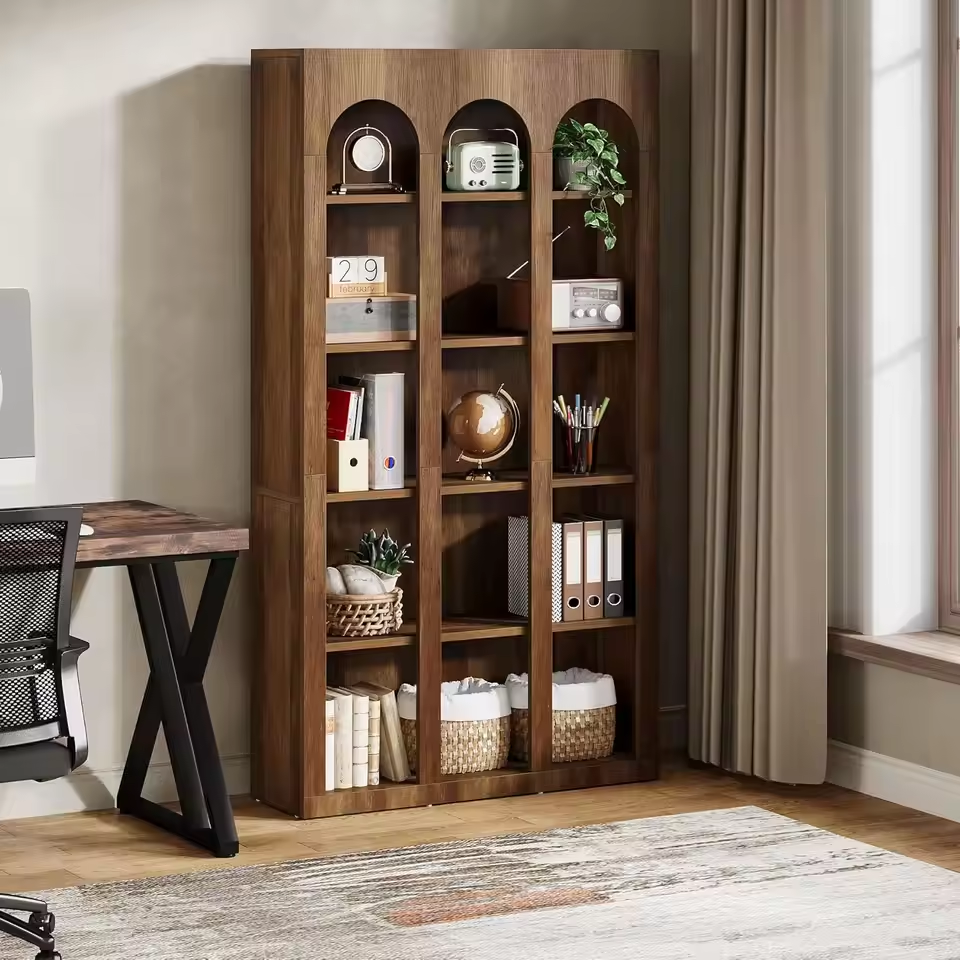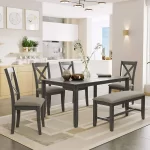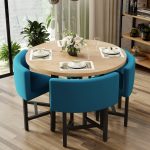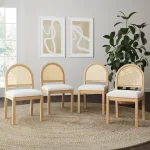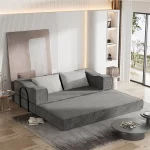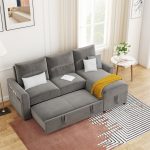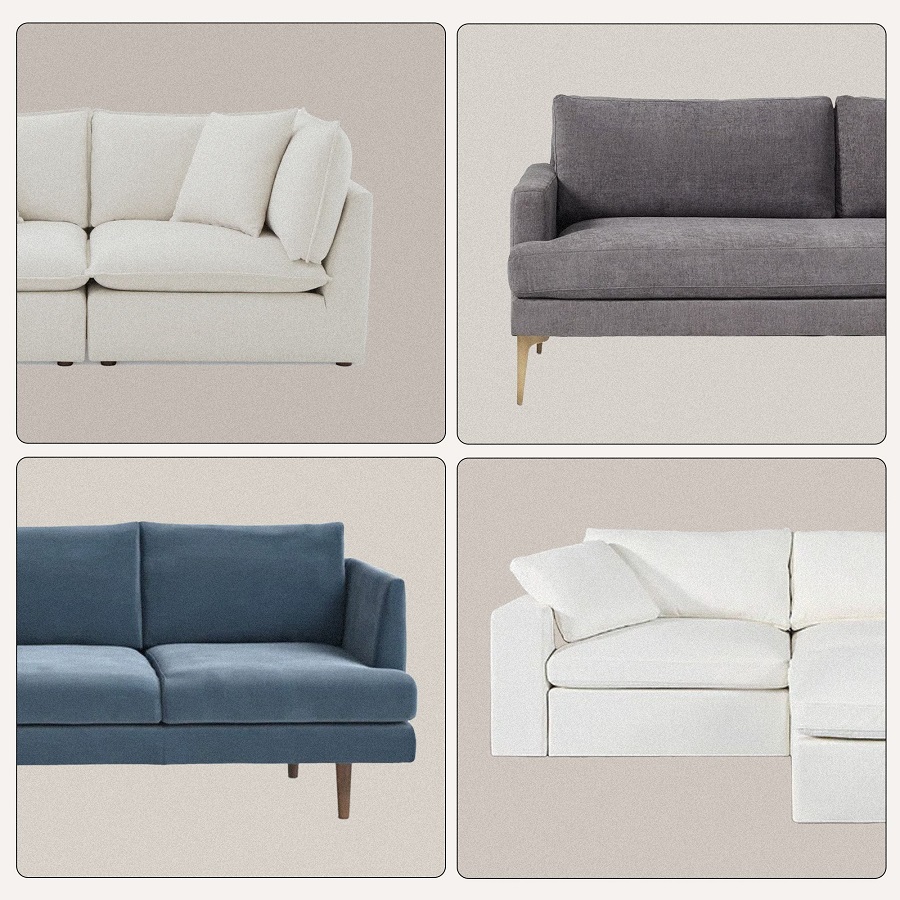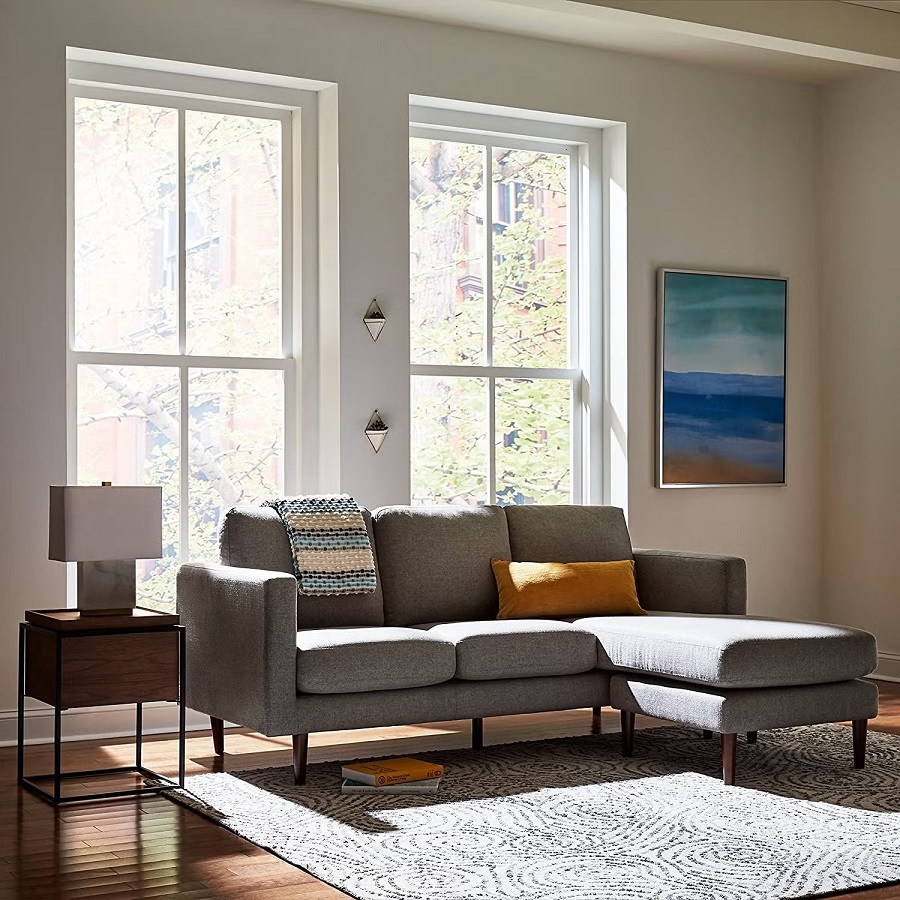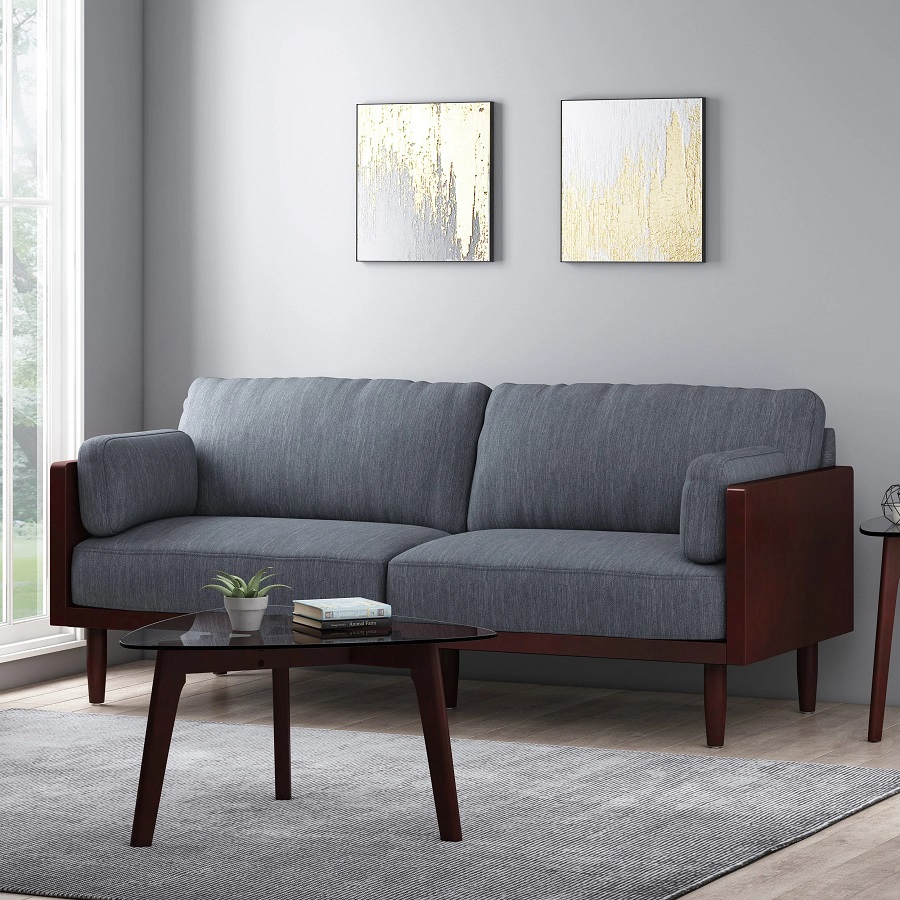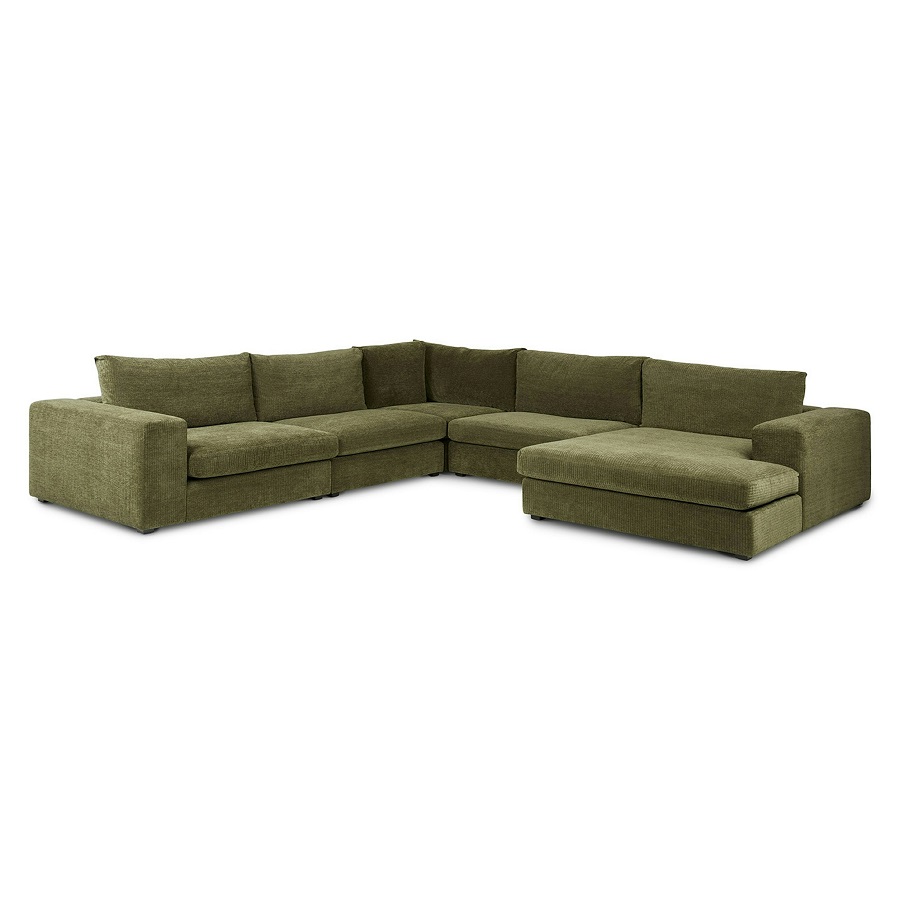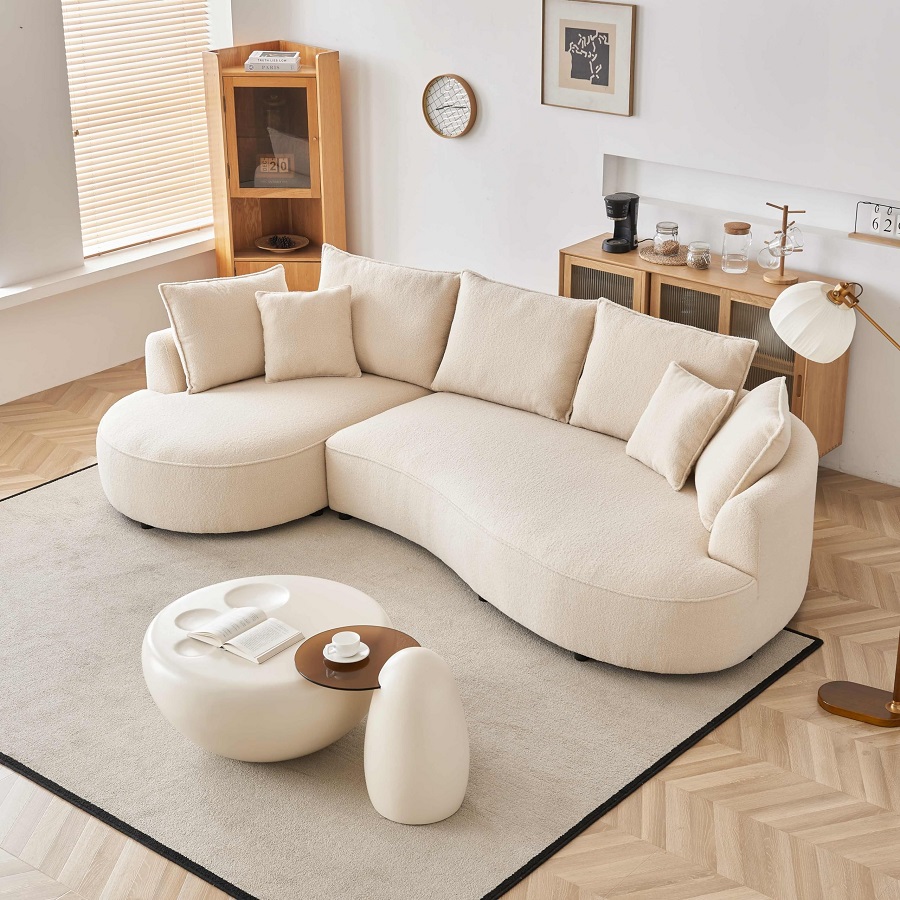History and Evolution of Sofa and Couch
The terms ‘sofa’ and ‘couch’ have rich histories, each with its own tale. The word ‘sofa’ has origins in the Arabic word ‘suffah,’ which refers to a bench. These were prominent in the Middle Eastern homes as a seating area combined with cushions for comfort. Over time, ‘sofa’ became the preferred term in British English, representing an upholstered seat with arms and a back, designed for two or more occupants.
On the other hand, the term ‘couch’ derives from the French word ‘coucher,’ which means ‘to lie down.’ In historical context, couches were typically used for reclining or lying down rather than sitting. This use is evident in their design without arms or with one arm, conducive to resting.
The evolution of both furniture pieces over the centuries is a fascinating journey through cultures and innovations. Initially, only the elite could afford such luxuries. As time progressed, the advent of industrialization and advancements in manufacturing brought sofas and couches into common households. The design began to shift from purely functional to a fusion of function and aesthetics as we moved into modern times.
Today, ‘sofa’ and ‘couch’ are often used interchangeably, but their roots reflect the diversity and depth of furniture history. While the sofa maintains its image as a more formal and structured piece, the couch stays true to its laid-back, versatile nature.
Understanding the ‘sofa vs couch’ debate entails a look back to their distinct beginnings and how culture and comfort have shaped their development. These historical insights enrich our appreciation for these everyday pieces of furniture.
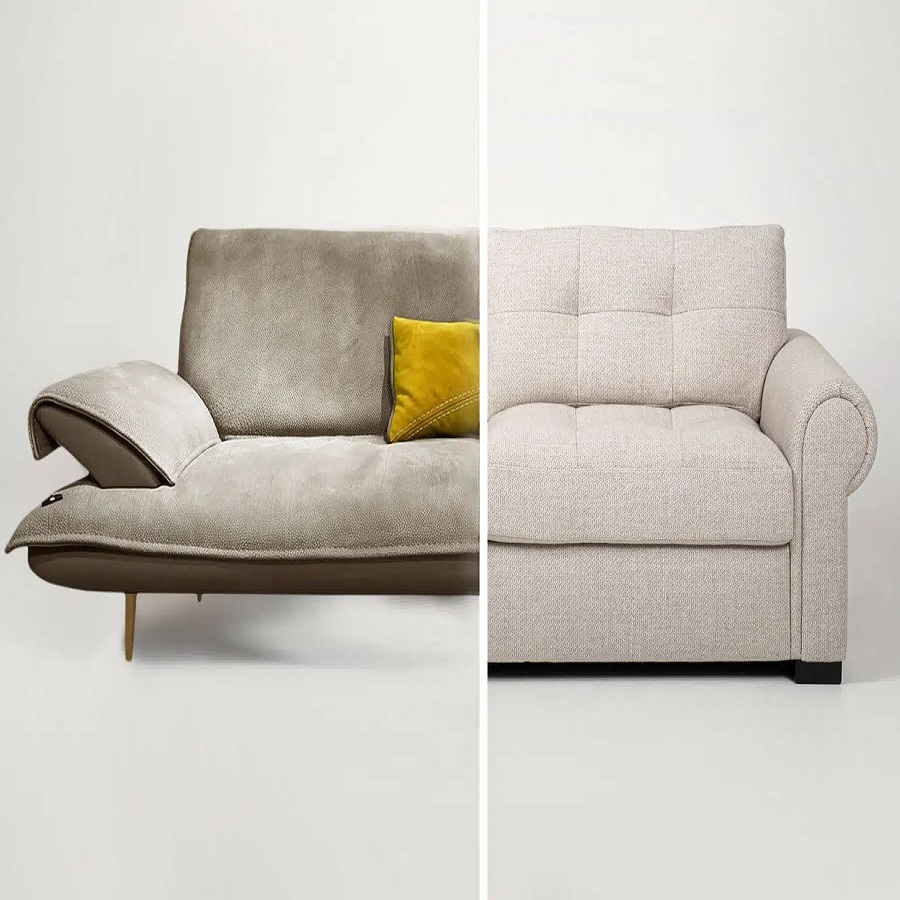
Understanding the Design Elements
When distinguishing between a sofa and a couch, design elements play a crucial role. Sofas usually feature a more intricate, formal design. They typically include two armrests, a distinct back, and ample seating for multiple people. Plush upholstery and sophisticated detailing often characterize these pieces, making them a staple in formal living rooms and upscale spaces.
Couches, in contrast, often embody simplicity and casual comfort. The absence of one or both armrests in many designs allows for a relaxed posture. Couches promote an easy-going vibe that suits informal settings like family rooms or dens. The design is flexible, making the couch a perfect choice for laying down or lounging.
The sofa vs couch debate extends to various design aspects:
- Structure: Sofas have a sturdy, well-defined framework. Couches may offer a softer and less rigid structure.
- Seating Capacity: Sofas typically seat more people comfortably compared to the more compact couch.
- Design Intent: A sofa is crafted for sitting upright whereas a couch invites users to recline or sprawl.
Recognizing these differences helps in understanding each piece’s role in home decor and how they contribute to the overall ambiance of a space. Every detail, from the line of the armrests to the style of the cushions, factors into whether a piece feels more like a sofa or a couch.
In summary, the design elements are integral to each piece’s identity—sofas exude formality and elegance, while couches offer an invitation to relax and unwind. When choosing between the two, consider how the design will complement the intended use and aesthetic of the room.
Comparing Comfort and Ergonomics
When we delve into the ‘sofa vs couch’ discussion, comfort and ergonomics emerge as pivotal considerations. Each serves a unique purpose, influenced by their construction and design philosophy.
Comfort Levels
Sofas are often synonymous with higher levels of comfort. With plush upholstery and supportive structures, they cater to prolonged sitting. Their firm cushions and armrests provide balanced support for the body, making them the go-to for a relaxed, yet formal sitting experience.
Couches, favoring flexibility, swap stringent support for a softer sit-down. Their design, which may feature fewer armrests and a deeper seating area, invites users to lounge and recline. This makes a couch preferable for informal relaxation and casual socializing.
Ergonomic Support
Ergonomically, the structured build of a sofa offers better support for good posture. It encourages an upright seating position, which is beneficial for those with back issues or who spend extended hours seated.
Conversely, the casual design of a couch can lead to slouching if one spends too much time reclining. This might be less ideal for ergonomics over long periods but perfect for short-term leisure activities like watching a movie or napping.
To sum up, the choice between a sofa and a couch may well come down to the balance between comfort and ergonomics. Sofas score high on ergonomic design, making them suitable for both rest and social engagement, while couches are the epitome of comfort and relaxation, best suited for informal spaces.
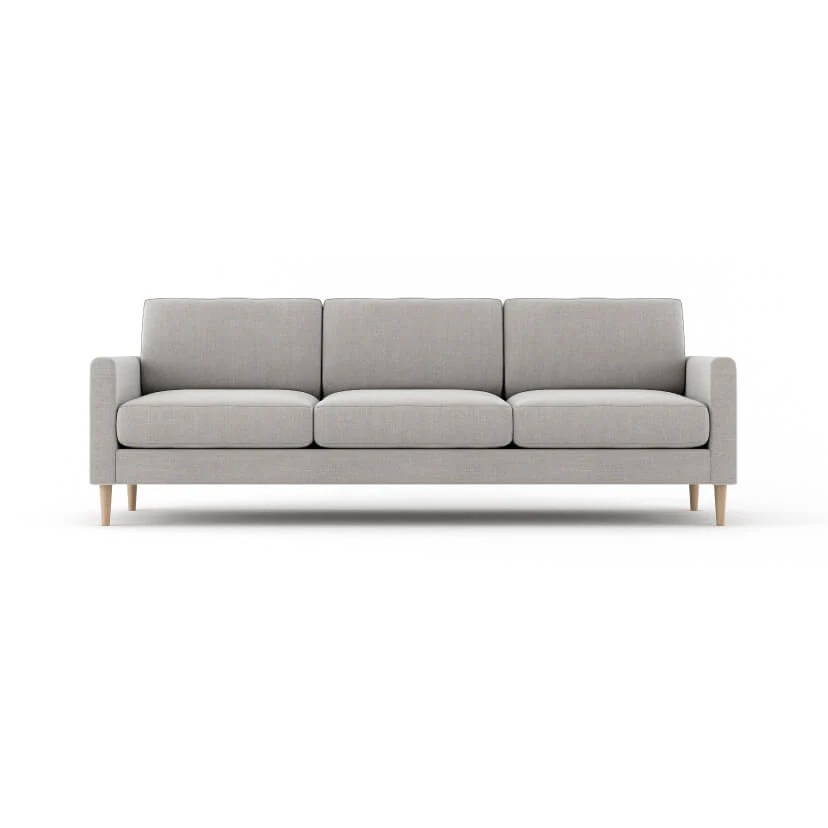
Analyzing Durability and Construction
When exploring the ‘sofa vs couch’ topic, durability and construction are essential factors. These features dictate how well the furniture will stand up to daily use and the longevity of each piece.
Sofa Durability
Sofas, designed for longevity, often have stronger frames. Hardwood materials are common in sofa construction, enhancing their lifespan. Joints are typically glued, screwed, or dowelled, ensuring sturdiness. High-density foam in cushions maintains shape and support over time.
Couch Durability
Couches tend to have a lighter build. This does not mean they are not durable, but their construction is suited for lighter, less frequent use. They may use softer woods or other materials that might not match the robustness of a sofa.
Construction Quality
The quality of the construction often determines how well furniture withstands wear and tear. Sofas are crafted with precision, while couches might have a more relaxed approach to construction. Look for well-constructed frames, quality fabrics, and firm stitching whether you choose a sofa or a couch.
Maintenance and Care
Taking care of your furniture extends its life. Sofas usually need regular care to maintain their formal look. Vacuuming, spot cleaning, and professional services help preserve them. Couches, often with removable covers, can be easier to clean and maintain.
In summary, sofas are built for durability and sustained use. Couches offer comfort but may need more gentle care. Consider construction and maintenance when deciding between a sofa and a couch for your space.
Style Variations Between Sofas and Couches
When it comes to style, sofas and couches offer a wide range of options, reflecting their unique characteristics and intended uses.
Sofa Styles
Sofas showcase a wide variety of styles; from classic to contemporary, they cater to different tastes. Traditional sofas often feature ornate details such as tufted backrests and intricate wooden legs. These pieces bring elegance to any setting. Modern sofas, with their clean lines and minimalist design, fit well in sleek, upscale spaces.
Among the popular styles are Chesterfields, known for their quilted or tufted design, and mid-century modern sofas, recognized for their retro appeal and simple forms. Sectional sofas add versatility, allowing multiple configurations to fit any room size and shape.
Couch Styles
Couches, on the other hand, lean toward relaxed and versatile design options. They often have a laid-back look, perfect for casual lounging. Modular couches offer flexibility; they can be rearranged to suit changing needs or preferences. Convertible couches, such as futons or sofa beds, serve dual purposes, transforming from seating to sleeping spaces.
Bean bag couches and daybeds are other examples of casual styles, offering a more free-form approach to seating. These are often favored in spaces like media rooms or playrooms where comfort takes precedence over formality.
In conclusion, while the terms ‘sofa vs couch’ might be used interchangeably, their style variations reflect their distinct purposes. Sofas bring sophistication and formality, while couches champion comfort and adaptability. Your choice should align with your personal taste and the functional needs of your space.
Functionality and Placement in Home Decor
In our homes, the placement and functionality of furniture is key. Both sofas and couches serve distinct purposes. Sofas, with their formal design, suit living rooms and office spaces. Here, they provide a place for guests to sit comfortably. They often anchor the room’s decor, adding a sense of structure. A sofa might sit opposite a TV stand or face other chairs, facilitating conversation.
Couches, known for comfort, are at home in family rooms or dens. Their casual nature fits well in spaces meant for relaxation. A couch may find its spot near a window with a view or in a corner for cozy gatherings. In smaller apartments, a couch might even serve as a makeshift bed for guests.
When considering functionality, ask yourself about the room’s use. For formal or special occasions, go for a sofa. If you’re after a place to unwind, pick a couch. The choice affects how the room feels and how people use it. Personal taste, space, and lifestyle needs should guide the decision on which one to place where in your decor.
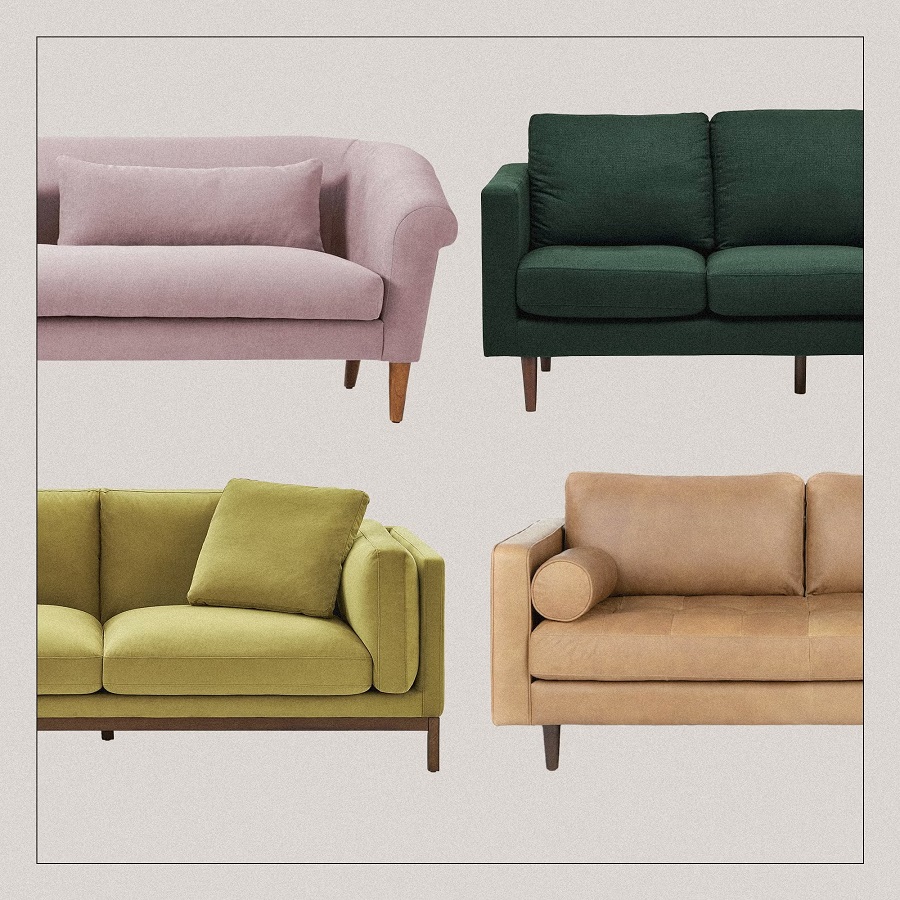
Materials and Upholstery Options
The materials and upholstery that cover sofas and couches greatly influence their appeal and function. When considering a ‘sofa vs couch’ purchase, it’s essential to explore the options available.
Sofa Materials
For sofas, the materials often signify luxury and durability. Leathers and heavy fabrics like velvet or brocade are common and suggest formality. These materials can withstand the rigors of frequent use while maintaining their elegant appearance over time.
Couch Materials
Couches usually employ more casual materials. Cotton blends, linen, and microfiber provide comfort and ease. They are soft to the touch and invite relaxed use. While they may require more upkeep than tougher sofa materials, they can offer more warmth and casual style.
Upholstery Options
Upholstery choices impact both comfort and room aesthetics. High-density foams, down feathers, and synthetic fibers are among the filling options that determine seat softness. Patterns and colors in upholstery also play a big role. They can be bold and vibrant for a statement piece or neutral for a subtle complement to a room’s decor.
In terms of maintenance, some upholstery types are easier to clean than others, influencing their suitability for varying lifestyles. Removable covers are an excellent choice for those who prefer an easy wash and wear approach.
When picking between a sofa and couch, consider how the materials and upholstery match your lifestyle and decor. Choose what meets your comfort needs and fits your sense of style.
Making the Right Choice for Your Space
When finalizing whether to choose a sofa or a couch for your living space, several aspects should be taken into account to make a decision that suits your needs. Reflect on the following key elements:
- Purpose of the Room: Is the space meant for formal gatherings or casual family time? Choose a sofa for the former and a couch for the latter.
- Space Constraints: Measure your room. A large sectional sofa fits a spacious area while a compact couch is ideal for smaller rooms.
- Lifestyle: Do you host often or is it mainly family lounging time? Your habits will dictate the appropriate furniture choice.
- Aesthetics: Consider the room’s current decor. A stylish sofa may enhance a formal setting, whereas a couch adds to a relaxed vibe.
- Material Preference: Leather and heavy fabrics last longer and fit formal settings, while softer fabrics offer cozyness but might need more care.
In conclusion, your choice between a sofa vs a couch influences your home’s comfort and style. It should reflect your personal taste, meet functional needs, and harmonize with your decor. Always prioritize the intended use and location within your space to guide your selection process.
